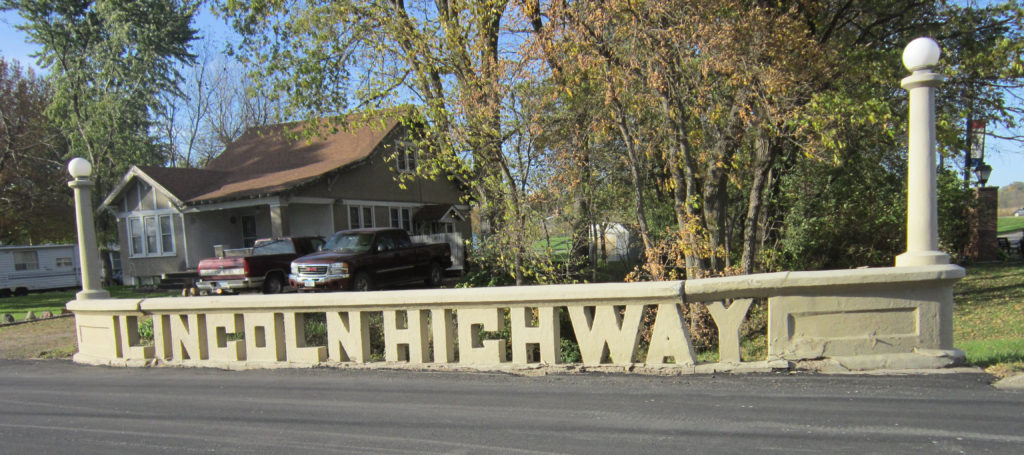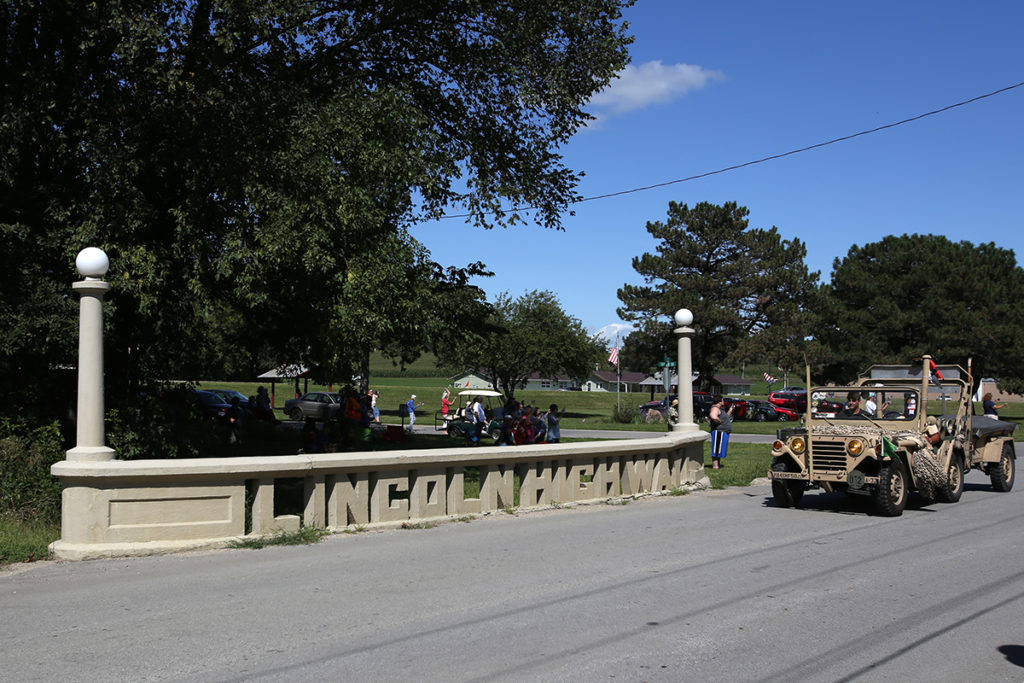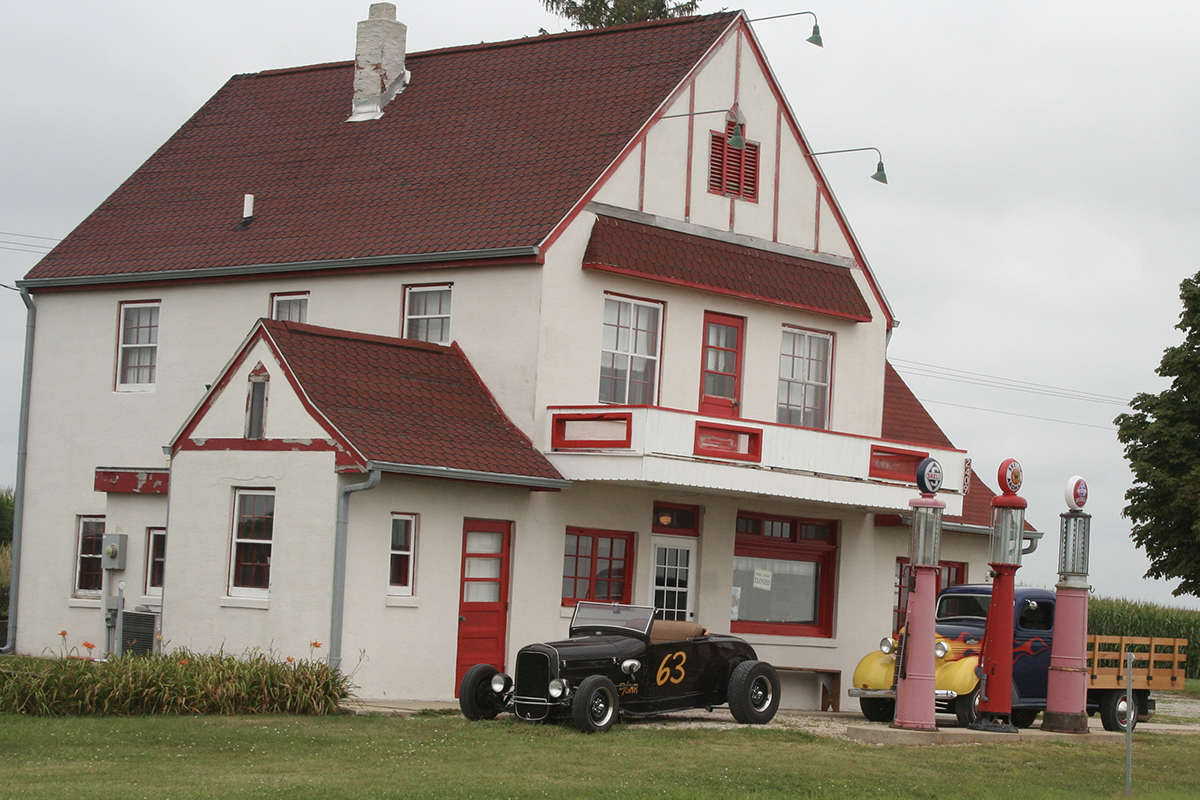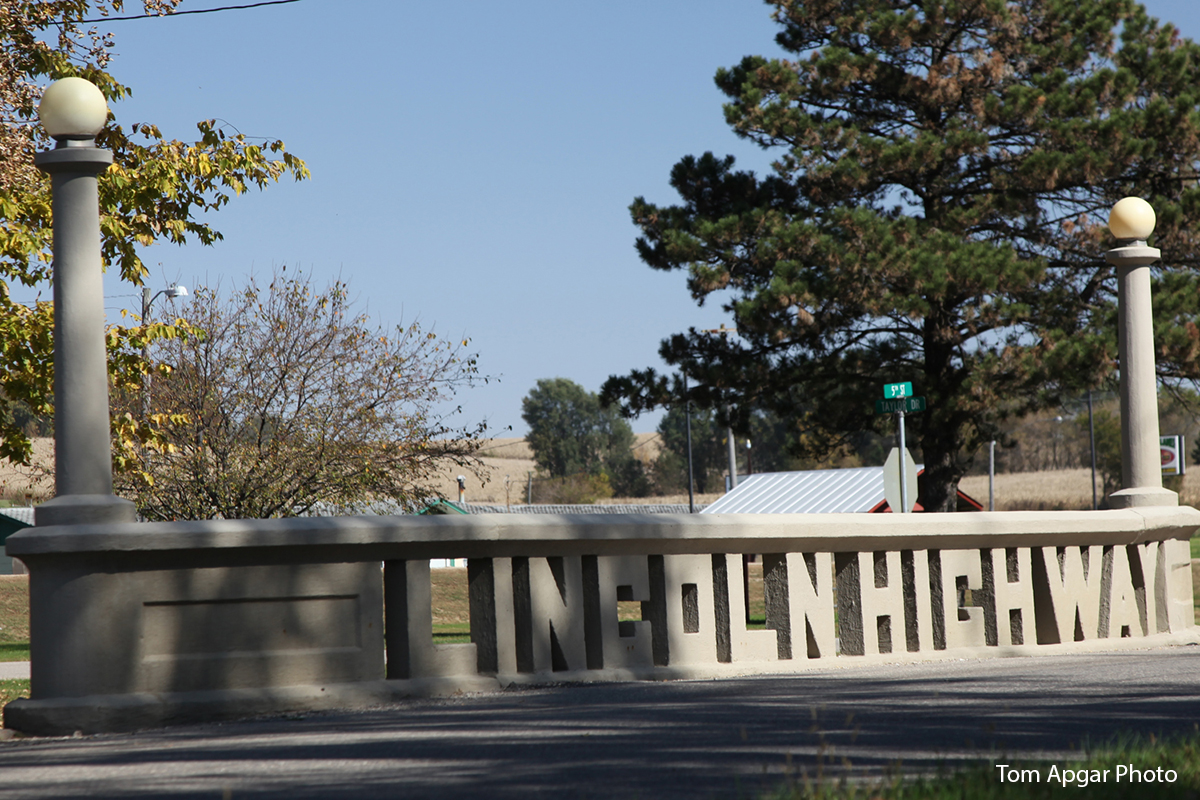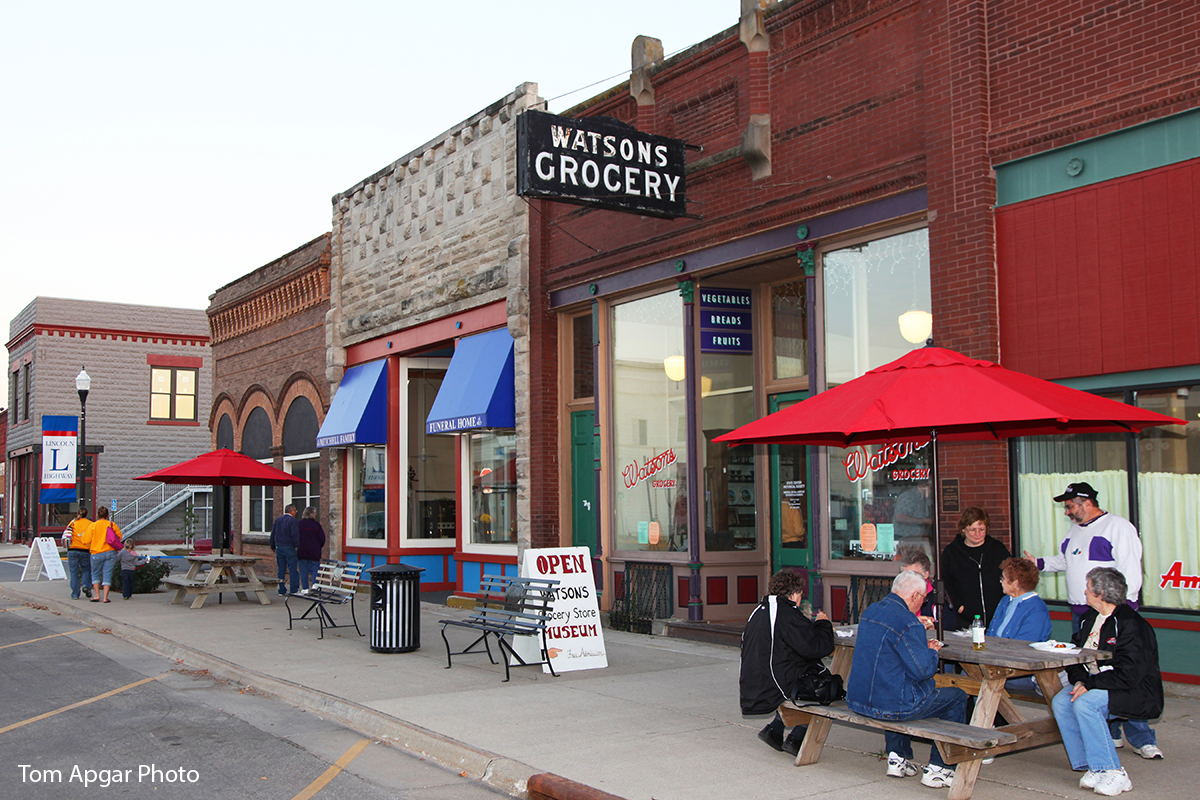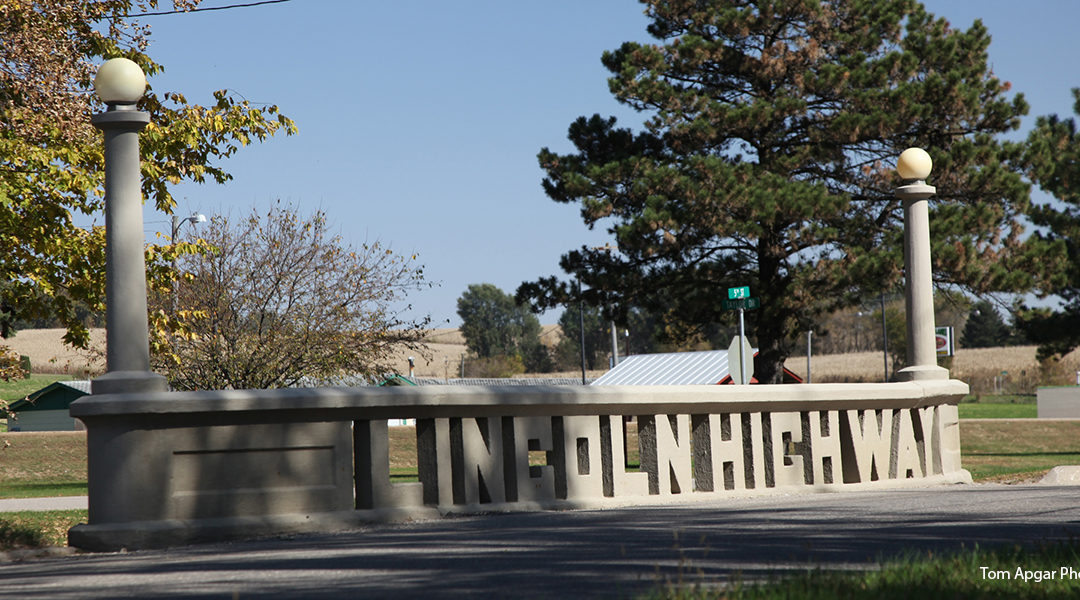
The Lincoln Highway Bridge Over Mud Creek in Tama in Need of Repair
One of the most iconic bridges in the 3,389 mile length of the historic transcontinental Lincoln Highway is in Tama, Iowa, and its structural integrity is in need of repair. As manager of the Lincoln Highway Heritage Byway, Prairie Rivers of Iowa has been working with the City of Tama to restore and protect the bridge, but process delays and COVID have slowed progress to a near standstill.
The Tama Lincoln Highway bridge holds an important place in the history of transportation in our country. It was constructed in 1915 when Woodrow Wilson was President of the United States and before we got tangled up in World War I. It was the year Babe Ruth hit his first career home run. Half of the US population lived on the farm, and most transportation was still by foot or horse. The Model T was popular and promised increased mobility but roads could be treacherous, especially after a rain.
The idea for the first improved transcontinental highway generated support across the country and gave birth to the Lincoln Highway Association. Towns along the roadway’s charted path were grateful for the honor, anticipating an influx of travelers and hence growth in commerce.
Tama’s now-famous bridge was constructed to attract interest and burnish the town’s image as a destination. Designed by Iowa Highway Commission architect Paul N. Kingsley, the Lincoln Highway Bridge is distinctive for spelling out the name of the roadway in its railings. Concrete lampposts topped by globe lights decorated the bridge’s four corners, adding to its graceful charm.
The Tama bridge was added to the National Register of Historic Places in 1978, nominated by the Tama Bicentennial Commission. The nomination included a quote from the July 1919 Lincoln Highway Forum, a publication of the Lincoln Highway Association, asserting that the bridge is “a good example of up-to-date highway advertising. Tourists over this section of the famous road cannot fail to be impressed with the advertising values as well as the pleasing and distinctive appearance of this unique feature of bridge construction.”
While the bridge has continued to attract admirers over the years, time has taken its toll. Prairie Rivers of Iowa has worked with the City of Tama to assess the integrity and safety of the bridge and put together a plan for its restoration. In 2018 PRI applied for and received a grant from the state Historical Resource Development Program of the Iowa Department of Cultural Affairs to help cover the costs. Additional support and funding has come from the Iowa Lincoln Highway Association, the Mansfield Foundation, and other donors, but a series of delays and the advent of COVID have held up progress. In October of this year, the Iowa DOT informed Tama that Iowa Code necessitates yet another delay to gather additional information and rebid the work. Meanwhile, the original cost estimate of $115,000 has mushroomed to over $300,000.
The Tama-Toledo News Chronicle reported in October that the City of Tama is planning to re-bid the project and complete the repair by August 2022, but the situation is being closely monitored by PRI, the Iowa Lincoln Highway Association, and history buffs across the nation.

